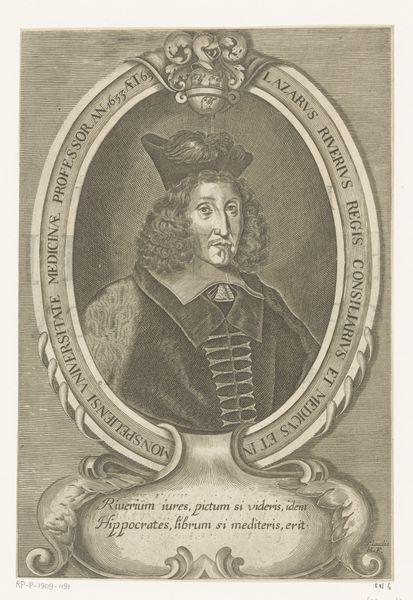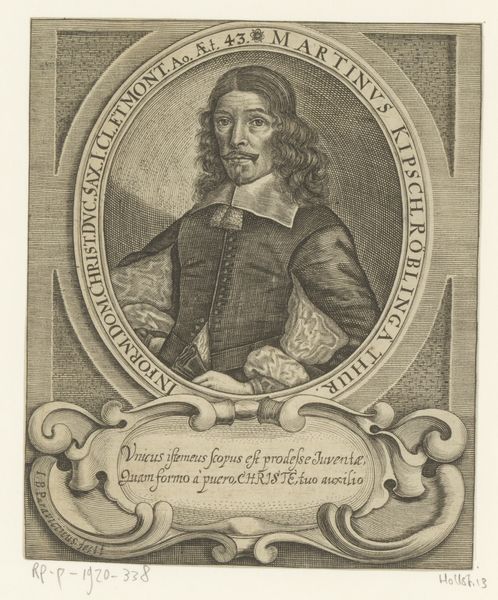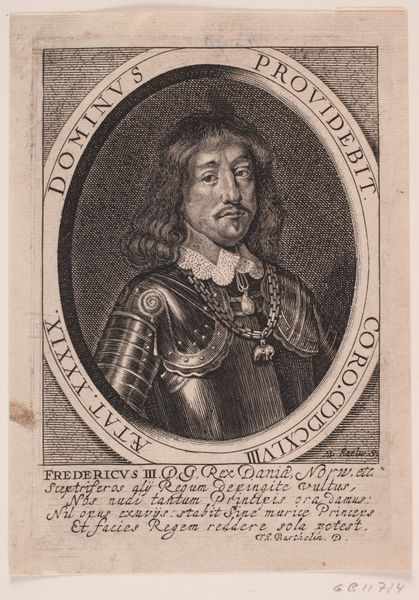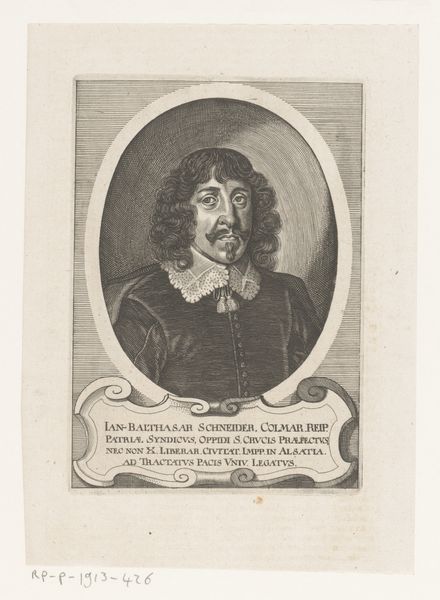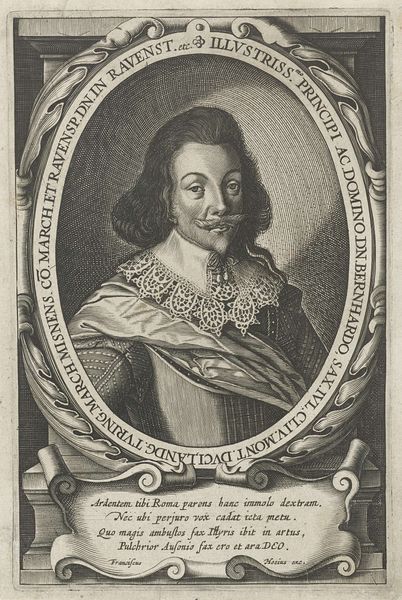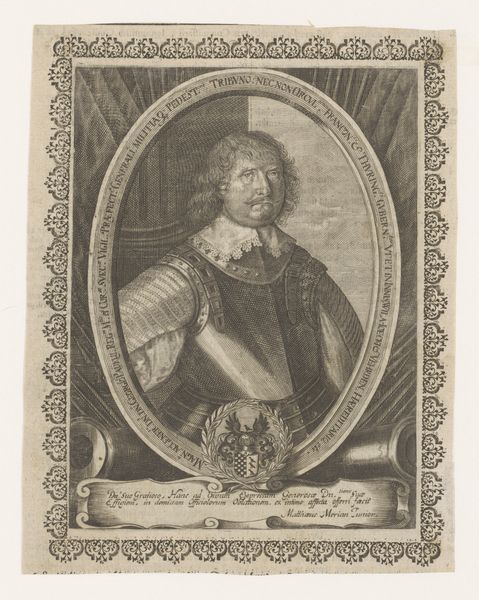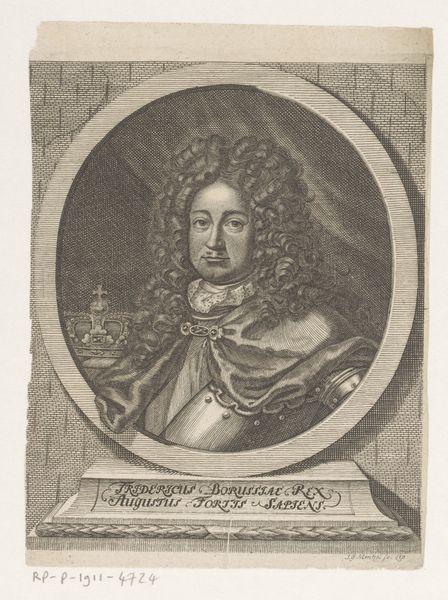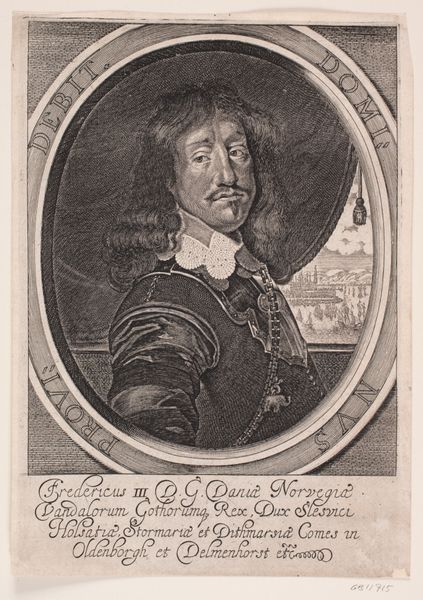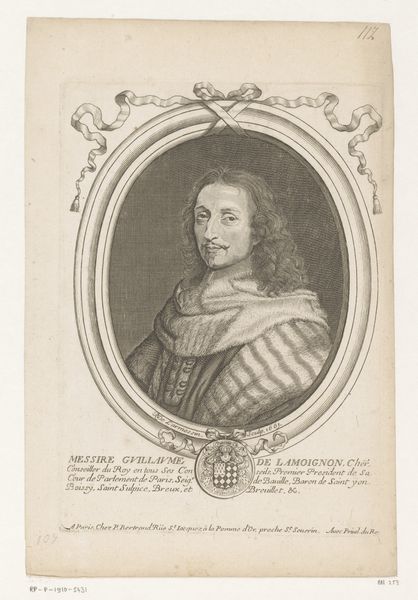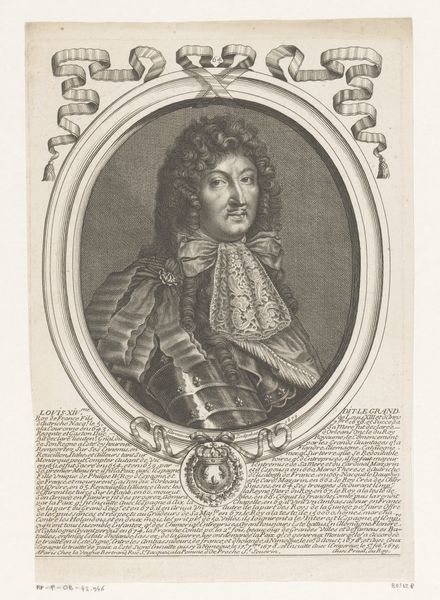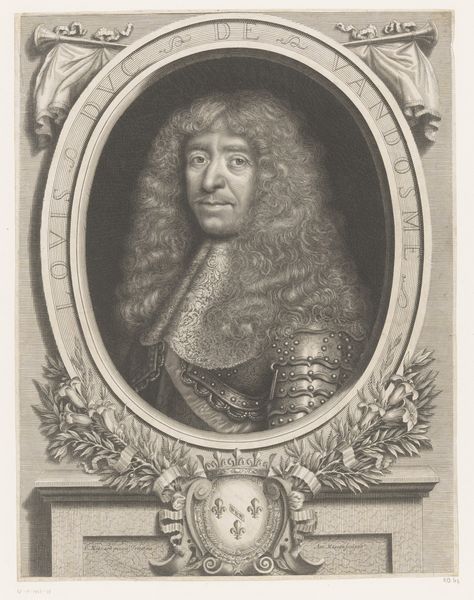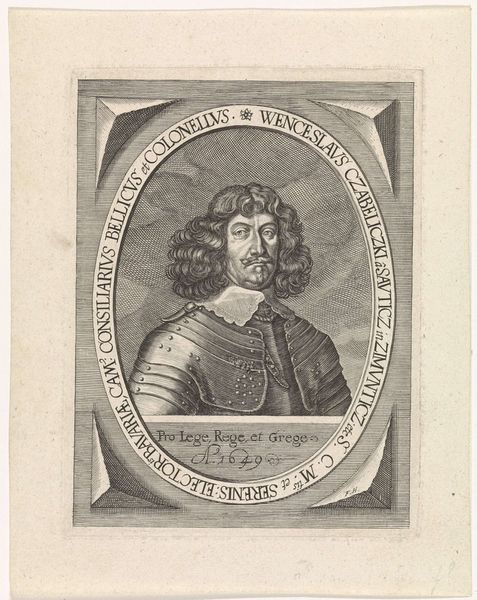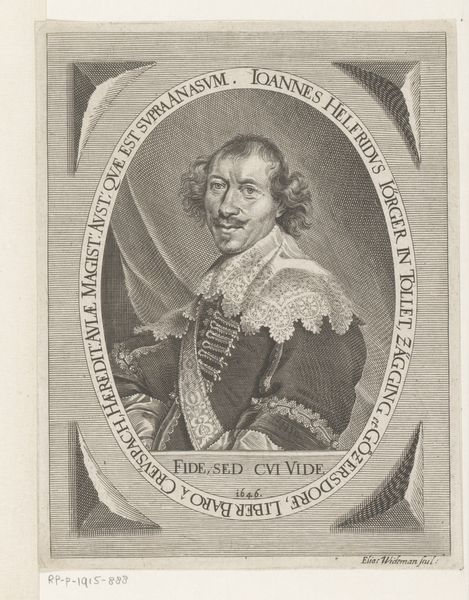
graphic-art, print, etching, engraving
#
portrait
#
graphic-art
#
baroque
# print
#
etching
#
old engraving style
#
history-painting
#
engraving
#
historical font
Dimensions: height 142 mm, width 88 mm
Copyright: Rijks Museum: Open Domain
Curator: Here we have Nicolas Auroux's "Portret van Lazare Rivière," an etching and engraving from 1640. Editor: The precision of line is striking. There’s an almost austere quality to the textures despite the baroque flourishes. A very formal depiction. Curator: Indeed. Auroux’s work, particularly in his engravings, focuses intensely on the formal elements. Note the concentric ovals framing the subject—one a plain border, and the other integrated with the surrounding inscription. It is carefully balanced. Editor: But the inscription, that's where the iconography blossoms. It elevates Rivière beyond a mere portrait. It's a proclamation, almost an epitaph in advance, surrounding Rivière's likeness with swirling cartouches. Look above, at the inclusion of his heraldic crest: these inclusions denote legacy. Curator: I see the inscription and heraldry as compositional elements supporting the figure's authority within the plane. The text balances Rivière's portrait, the flourishes creating necessary tension to the geometry of the piece. The subject appears nestled among layers of information, simultaneously framed by, and rising out of these structures. Editor: I perceive a different intent. The very choice of portraying him amidst symbolic language reveals the importance of Rivière’s intellectual and professional identities. It places him in the lineage of Hippocrates! He is made timeless through his work and the memory of it. Curator: You're implying the intention supersedes execution? I maintain that while these iconographic touches add cultural context, the effectiveness rests heavily on the linear clarity and balance achieved. Without a command of form, this becomes mere documentation. Editor: I wouldn't call it "mere." These visual motifs function as historical shorthand, embedding cultural significance into the work. The seemingly severe Baroque setting only amplifies the weight of Rivière's contribution, echoing through decades even now. Curator: So, we’re seeing a portrait not just of a man, but a portrait of his intellectual contribution encoded into the material object. A clever commingling of symbol and line, I have to admit. Editor: Precisely! And viewed through an iconographic lens, Auroux gives us not only a glimpse of a 17th-century academic but reveals something lasting about how knowledge and memory intersect through symbolic imagery.
Comments
No comments
Be the first to comment and join the conversation on the ultimate creative platform.
